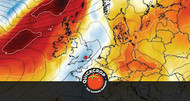Gardening tips for dry weather
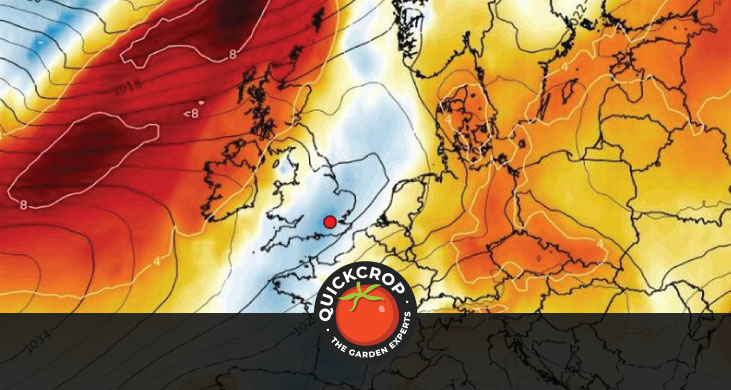
I gather that while the whole country is experiencing some warm and dry June weather, us culchies on the west coast are getting the highest temperatures (for a change). Of course, last week I had decided to go away on holiday so I missed the whole thing, although it does seem like the fine spell may last until the weekend.
Regular readers will know that I have an irrigation system installed in my polytunnel so I wasn't concerned about watering my tomatoes while I was away. I was surprised, however, at how quickly the beds outside dried out especially those where I have cabbages and Brussels sprouts starting to fill out.
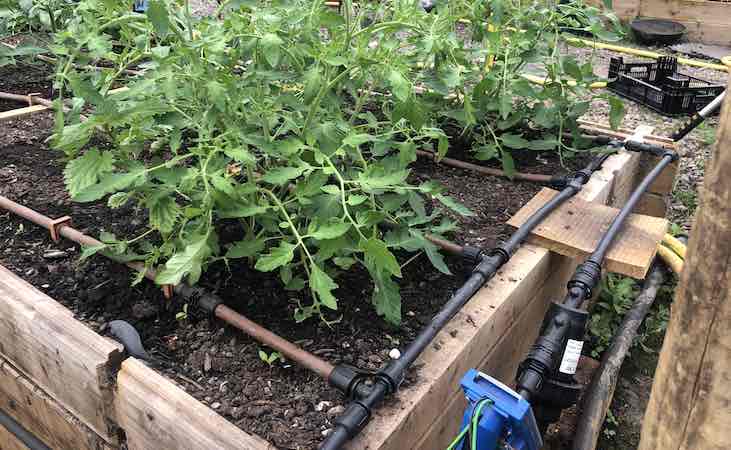
Anyone familiar with the subtleties of capitalism will be alert to the fact that I am gearing up to sell something. Sure, that's what I'm at the whole time, let's face it. But what if you need a bit of advice on gardening in dry weather and you don't know where to turn? Look no further I say and, if you need any equipment at sensible prices, delivered in a day or two and backed up by hands on experience and efficient customer support, again, we've got you covered.
Why Deep, Infrequent Watering is Best
It may be helpful to know that at least 25% of water used to irrigate plants is lost to evaporation (more or less depending on the weather). Some will evaporate quickly from the plant leaves while the bulk is lost from the soil surface. Plants also lose moisture through transpiration where water is sucked up by roots and exits as water vapour through stomata on the leaves.
There isn't anything we can do about transpiration, nor would we want to, but we can reduce the amount of water lost from the soil surface by changing how and when we water.
It can be hard not to give plants a drink if they are wilting in the heat of the day, but this can be a normal response to high temperatures that won't be remedied by giving more water.
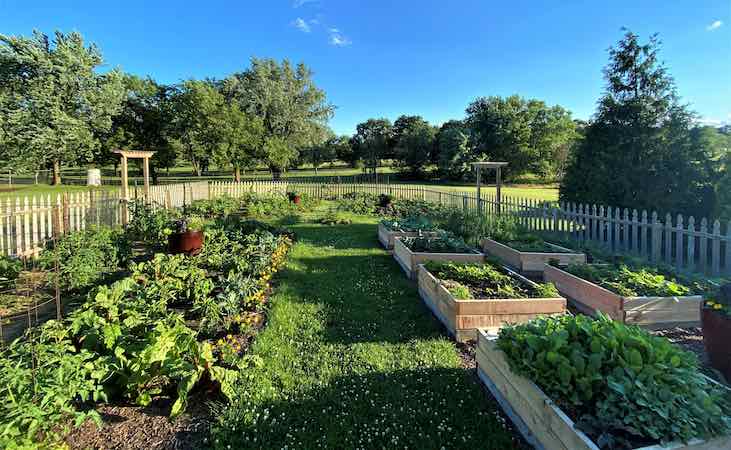
Plants with large leaves (e.g. cabbages) will often wilt in hot weather; this is a natural response due to the fact that their roots can't keep up with the water demands of the leaves. Watering won't make any difference, but you will see the leaves recover if you shade the plant or when temperatures drop later in the day. The times to take note are in the morning or evening: if leaves are still wilting when the air is cooler, then the soil is too dry.
Infrequent deep watering is better than frequent light watering as it builds up a store of moisture below the soil surface (where it is slow to evaporate). The plant roots can draw from this reservoir during the day while you replenish it in the evening or early morning when temperatures are cooler and less water is lost.
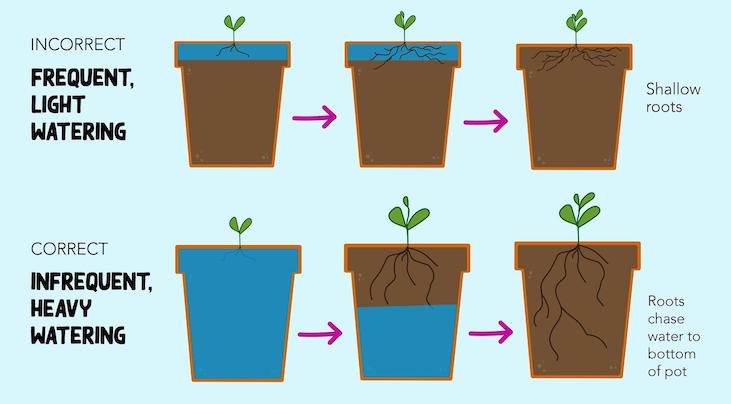
The other advantage of infrequent heavy watering is that is encourages your plants to be more drought resistant. Roots grow to search out water so, if all your moisture is near the surface, that is where the roots will be. As we know, water evaporates quickly from the upper soil layers, so if there is a drought shallow roots can be very vulnerable.
Deep watering interspersed with dry periods causes the plant to grow a deeper, more extensive root system. This means your plants are much better equipped to deal with water shortages and will survive longer if you need to stop watering altogether (if there is a hosepipe ban).
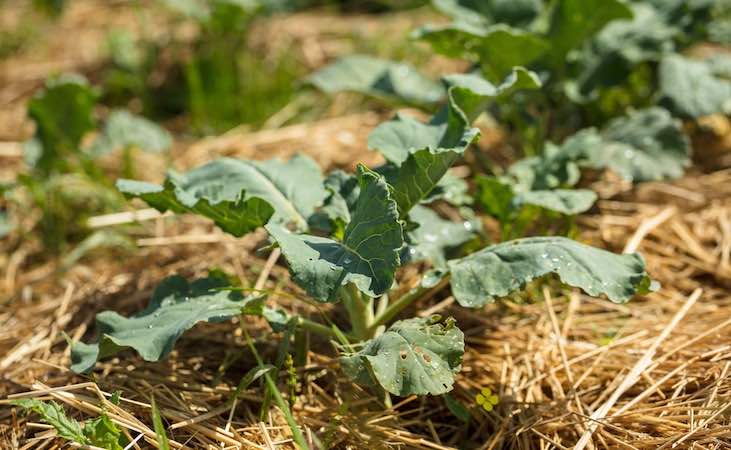
Mulching Soil to keep Moisture In
Mulching your garden with bulky, organic material has a number of benefits including weed control and feeding and improving your soil but it is also an effective barrier against evaporation. Compost mulches are very good at soaking up and holding onto water, they can be watered directly and will allow the moisture to soak through to the soil below.
Mulches of straw or grass clippings can form a thatch over the soil which offers good protection but can cause water to run off. If watering by hand with a hose or watering can, it will be better to either water directly around plants or pull the mulch back to water and replace when done.
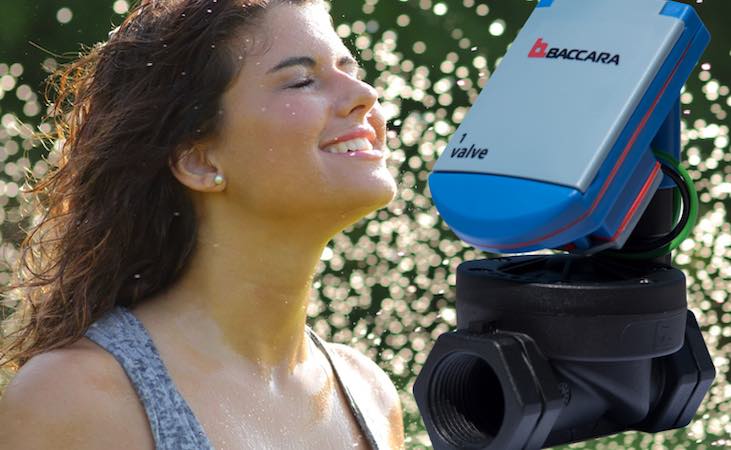
Timing Your Watering
The best time to build up soil moisture levels is at dawn when most of the water you use can soak in; dawn is preferable to dusk because some warmth loving plants will prefer not to sit in cold, wet soil overnight. Most people don't like to getting up at dawn to water their plants, which makes a timed irrigation system a sensible choice.
Look how happy this person is above with her professional Baccara G75 water timer (that we sell). You know what that expression is? Peace of mind. She knows that her battery operated timer is a totally separate unit from the valve meaning there will never be a leak that damages the electronics. That happy, carefree smile will also be because she has set her 3 automatic timing sessions to perfectly suit her garden and her busy lifestyle.

Build Your Own Drip Irrigation System (16mm Parts Picker)
View ProductDrip Irrigation
I never thought I would need an outside irrigation system but if this dry period continues I was thinking I might rig up a temporary kit in my brassica beds to see how it goes. The one point I would make about dripper systems is that they are really easy to install and can be moved around. Nearly all the beds are the same size in my garden so, if I create a setup for one bed, I can transfer it to another if needed.
A bed system is very simple. You just need to build a supply line (shown in black above and below) with junctions spaced 30cm apart. The dripper lines are cut to whatever length the beds are and them slotted on to the supply line. Both supply and dripper line can be cut with a secateurs, the connections are push fit and hand tightened so there are no tools required to build.
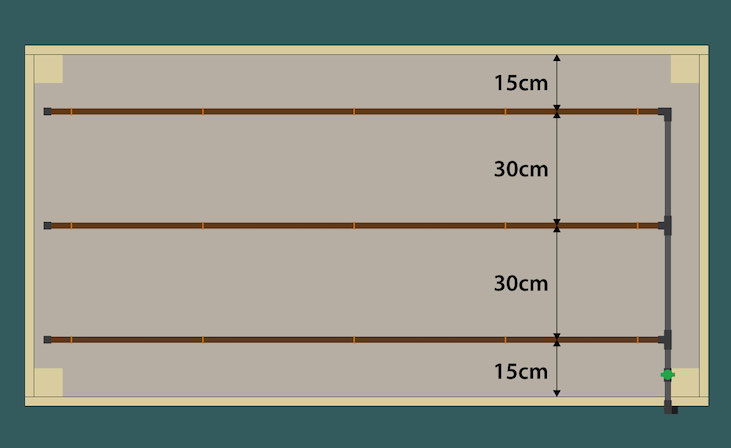
Multiple systems like these can be easily joined or, as I said, you could build one or two and move them around. I think a timer is a 'no brainer' addition as it has so many advantages (you can go on holidays and water at the most efficient times) but you can also run a bed system without a timer by joining directly to a garden tap using a length of hose.
The reason I like dripper systems, and especially timed dripper systems is that they tick all of the boxes that I mentioned above. The advantages are as follows:
- They are economical: you can deep water your beds at the most efficient times.
- Unlike sprinklers or hand watering, drippers water very little of the soil surface; they drip at small, fixed intervals meaning nearly all of the moisture goes underground where it spreads by capillary action and irrigates whole bed.
- Dripper lines can be placed under a mulch which further reduces water usage.
- The systems are very easy to install.
As I have said before, we are always happy to help with dripper systems. They do appear complicated at first glance but, once you see how it works, they are actually very simple. Let me know if you are interested in one and need a hand.
